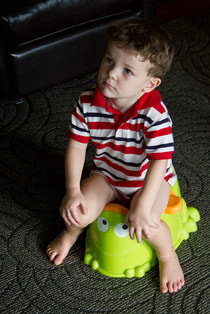POTTY TRAINING
Episode 10
|
When a child complete the potty training process, it is a great milestone for the child and family. The child becomes more independent and can help build self-esteem. For parents in means the end of changing and purchasing diapers. That said, it is one of the most challenging aspects of early childhood for everyone involved. I didn’t quite get this at first because my first child was using the potty on his own by the end of the first day. Maybe we knew something others didn’t. Well after just completing potty training with my third child, I can truly appreciate the struggles of potty training. It can be exhausting, frustrating, confusing to the child and the parent. When we picked out a dog this summer, my #1 requirement was that the dog be fully potty trained because I was not going through it again.
Guest Information - Melissa Stephenson is a preschool teacher at Discovery Child Development Center in Morrisville, North Carolina. She has worked in the early childhood field as both a teacher and an administrator for the past 14 years. Prior to joining Discovery in 2014, she was a toddler teacher where she potty-trained groups of students at a time. Also, as part of her administrative duties, she trained teachers on how to potty train students.SIGNS OF READINESS TO USE THE POTTY
|





